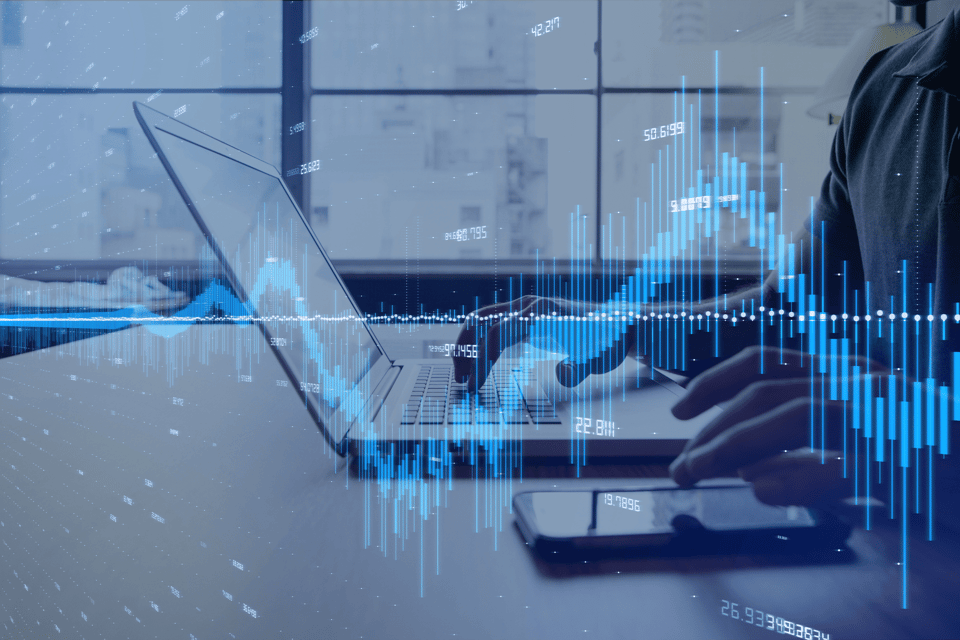When it comes to technical futures trading, support and resistance is a key concept to understand. Whether you’re applying trend, reversal, or reversion-to-the-mean strategies, support and resistance can be an integral part of your methodology. In this blog post, we’ll break down the ins and outs of how this concept works in the live market.
Futures Trading 101: What Are Support and Resistance Levels (S&Rs)?
Support and resistance levels (S&Rs) are individual price points that may or may not constrict price action. When a market reaches defined S&Rs—in theory—price action will either become compressed or exhausted or reverse course. This information can be useful when determining market entry points, as well as when fine-tuning stop loss and profit target locations.
S&Rs come in two basic types:
- Support: Support levels are technical indicators present beneath a market’s current price. They are viewed as obstacles to bearish price action and possible catalysts for fresh bids.
- Resistance: Resistance levels are technical indicators situated above evolving price action. Subsequently, resistance levels hinder bullish moves and are viewed as areas attractive to sellers.
Any trades are educational examples only. They do not include commissions and fees.
Like all things in futures trading, S&Rs aren’t foolproof. Although a support or resistance level may prove valid, order flow ultimately dictates the effectiveness of the indicator. If enough buys or sells hit the market at once, no support or resistance level can withstand the onslaught.
In addition, it’s important to respect the immediate area surrounding each support or resistance level. For instance, if you have topside resistance set up in WTI crude oil at $40.00, the exact price point isn’t necessarily the line in the sand. It’s possible that sellers may step in at $39.94 or $40.04, stalling bullish momentum. However, this doesn’t mean that the resistance level didn’t work―with S&Rs, seeking 100 percent precision is often a frustrating endeavor.
S&Rs in Action
As noted above, S&Rs have countless applications to reversal, trend, and reversion futures trading strategies. In fact, many technical traders refer to them exclusively when deciphering market entry and exit points. Here are a few ways in which S&Rs are used:
- Reversal: A reversal strategy is one in which the trader attempts to locate a point at which a prevailing trend will change its direction. Moving averages are S&Rs commonly used for completing this task. Popular moving averages—such as the 50-day, 100-day, and 200-day—are frequently referenced in reversal strategies. When a price breaks through a desired moving average, a new long or short position may be taken in anticipation of the market changing course.
- Trend: In futures trading, it can be lucrative to get in on a directional move in asset pricing. One way that traders do this is by entering an existing trend from a Fibonacci retracement level. Upon price pulling back from a periodic extreme to a 38 percent, 50 percent, or 62 percent retracement level, a trend-following position is taken―a buy from bullish support or sell from bearish resistance.
- Reversion to the mean: In range-bound markets, reversion-to-the-mean strategies are particularly effective. Reversion traders look to trade price action from an established high or low and take profits when price returns to a periodic average. S&Rs derived from Bollinger Bands or pivot points excel in these types of strategies because they provide entry points that complement the slow market conditions.
One of the key benefits of S&Rs is that they are easily combined with other fundamentals and technicals. Momentum oscillators, such as stochastics or moving average convergence/divergence (MACD), are especially useful. When price reaches a defined support or resistance, a trader may employ oscillators to determine overbought or oversold conditions. By doing so, the trader can make an educated guess about whether a market has reached a bottom or a top or is likely to extend a prevailing trend.



